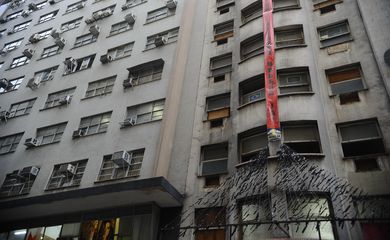Urban mobility among most critical issues faced by Brazilian cities




An all-too-common scene witnessed by commuters. Public transport is expensive, distances too great, buses and metro trains overcrowded, and the use of private vehicles encouraged.
City dynamics has been subject to a heated debate all across Brazil, not least because of the street protests staged in June 2013 over the matter. It became manifest in the aftermath of the demonstrations how bleak the scenario in the big cities was—public transport is expensive, distances too great, buses and metro trains overcrowded, and the use of individual vehicles encouraged. “The investment in individual motor vehicles totals eight to ten times as much as in collective ones. Over the course of the years, this was reflected in the design of the cities, which favors car drivers. This is unsustainable in the medium and long run,” remarked sociologist Renata Florentino, a researcher at the Observatory of the Metropolises.
According to the Brazilian Institute of Geography and Statistics (“IBGE”), nearly 85% of Brazilians live in an urban area. It is furthermore reported by the United Nations (UN) that the country’s rate of urbanization is estimated to reach 90 percent in the next five years. The large number of people living in the city makes it imperative to implement public policies that enable society to live in it under an atmosphere of equality and harmony. One of the everyday challenges in the country’s major cities is to ensure the right to come and go of such a massive amount of citizens.

The large number of people living in the city makes it imperative to implement public policies that enable society to live in it under an atmosphere of equality and harmony.
Faced with this scenario, experts and activists interviewed by Agência Brasil have unanimously highlighted the need to treat public transport as a top-priority issue. “Increasing the traditional infrastructure won’t be of much help. It is the role of the governments to make predictions and study the dynamics in which we’re living and find alternatives,” argues economist Pérsio Davison, advisor at the organization Rodas da Paz (“Wheels of Peace”), in Brasília. He believes it is necessary not only to improve public transport and encourage the population to use it, but also to invest in other means of transportation, like the train and the metro. A report released by the National Association of Companies of Urban Transport shows that 30 percent of Brazilians stopped taking buses sometime between 1995 to 2013.
Luana Xavier, press advisor of Terra de Direitos (“Land of Rights”), points out that the federal policies in this sphere should converge so that they do not become detrimental to the National Policy of Urban Mobility. “For the first time, the objectives of prioritizing collective transport have been clearly set forth. On the other hand, there’s the policy encouraging the purchase of cars through lower taxes,” she criticized. The number of vehicles went from 25.5 million in June 2005 to 46.6 million in the same period this year, according to figures from the Ministry of the Cities.

Only seven capital cities in Brazil have a metro system: Brasília, Porto Alegre, São Paulo, Rio de Janeiro, Belo Horizonte, Recife, and Fortaleza.
President of the National Federation of Metro Workers Paulo Pausin sees a solution in the increase of investments in the rail transport. “The big cities are crammed and there cannot possibly be any further investment in individual, or road transport,” he argues. The federation maintains that 2 percent of the country’s gross domestic public (GDP) should be invested in rail network. The institution reiterates that only seven Brazilian capitals have a metro system: Brasília, Porto Alegre, São Paulo, Rio de Janeiro, Belo Horizonte, Recife, and Fortaleza.
Nonetheless, the agencies note that the resources, even when available in large amounts, may not suffice if the “current segregating city model” does not undergo a reform. “This doesn’t mean you have the right to the city, the right to avail yourself of the urban space. If you don’t have the money, you won’t be able to transit freely,” states Lucas Monteiro, a member of the Free Fare Movement (“Movimento Passe Livre”), which was among the leading groups in charge of the protests in 2013 for the reduction of fare prices.
Luana Xavier, from Terra de Direitos, holds that it is necessary to ponder on the reason why people have been more often in transit today. “The working class is being expelled from the city centers and moving towards the outskirts, where living costs are more affordable,” she argues.
Renata Florentino, from the Observatory of the Metropolises, believes the debate over mobility must not disregard the subject of planning. “The discussion must include moving the job closer to where the people are and encourage the construction of affordable homes in the big centers, where most job openings are located,” she says.
Along the same lines, Luana Xavier believes the government should have control over land prices to prevent communities from being forced out of areas that may become more expensive in the future. “Regions closer to metro stations in São Paulo are highly valued. It is necessary to reconcile investments in mobility with the efforts to curb land prices in order to ensure that the population are able to occupy the area in question,” she states.
Translated by Fabrício Ferreira
Fonte: Urban mobility among most critical issues faced by Brazilian cities




